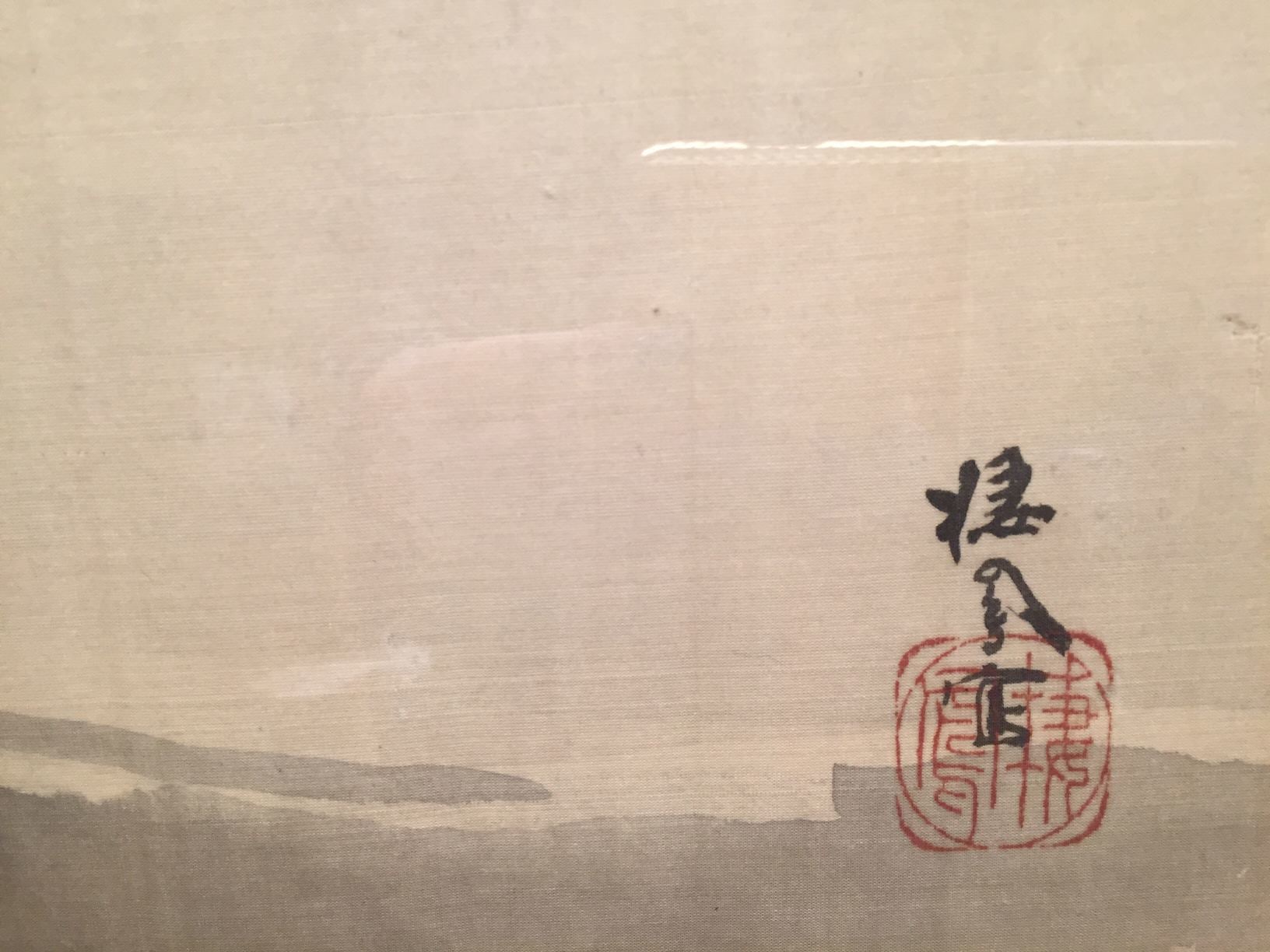TAKEUCHI SEIHŌ (1864-1942)
Mount Fuji
ca. 1892-95
16 3/8 x 55 3/8 in. (painting); 22 3/8 x 68 7/8 in. (framed)
Ink and light color on silk; silk brocade mount and wooden frame
Price on Request RESERVED

A descendant of the Maruyama-Shijō tradition of bird-and-flower painting, Takeuchi Seihō became a key figure of the Kyoto school of modern painting and a highly influential member of the Kyoto Painting Circle in the early 20th century. Unparalleled in both artistic and teaching prowess, he remained a leading figure in the Kyoto arts community for decades. As were the masters of the Maruyama-Shijō school before him, Seihō was intent on capturing the essence of his subjects from first-hand observation, shasei “sketching from life.”

This highly atmospheric and dramatic night scene of Mount Fuji was painted around the time of his European travels. The view of Fuji emerging from the clouds anticipates Seihō’s mature landscape style, which became a significant part of his repertoire later in his career. Painted on silk rather than on paper, the scene is dynamic, alternating between virtuosic, expressive brushwork and delicate pools of color and ink. Seihō uses brush techniques unique to the East Asian ink painting tradition to render the rugged contours of the mountaintop, acting at once as the undeniable statement of the brush’s centrality to the work, yet blending together to create an illusion of a fully realized, cohesive landscape.

The asymmetry of the composition causes the towering Fuji to dominate the impression of the painting differently from paintings of the premodern period. Instead of the placement of the mountain at the center of the composition as may have been more standard in premodern compositions, here the mountain seems to claim the composition for itself, not at the center of the composition, but still dominating the painting’s field of view. This accordance of visual agency to Fuji gives the painting a fresh, modern sensibility. This successful combination of abstraction and realism to dramatic effect foreshadows how Seihō’s mastery of the Maruyama-Shijō tradition and Western naturalism would eventually evolve into a rich and highly individualistic style in his mature period.